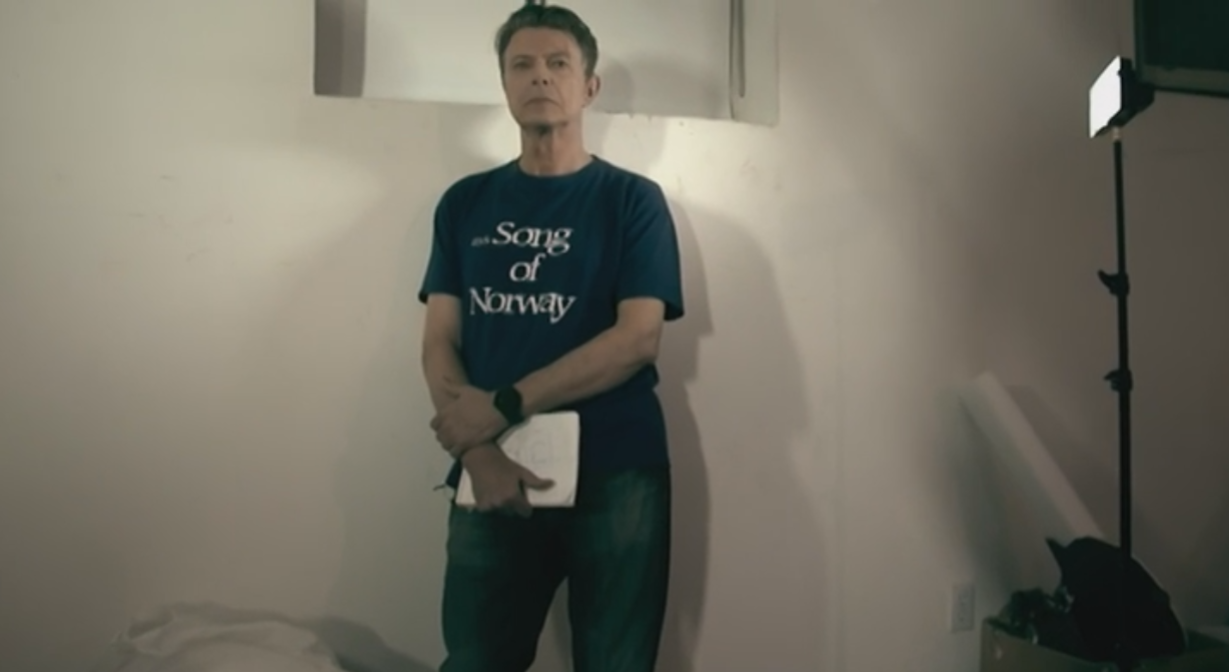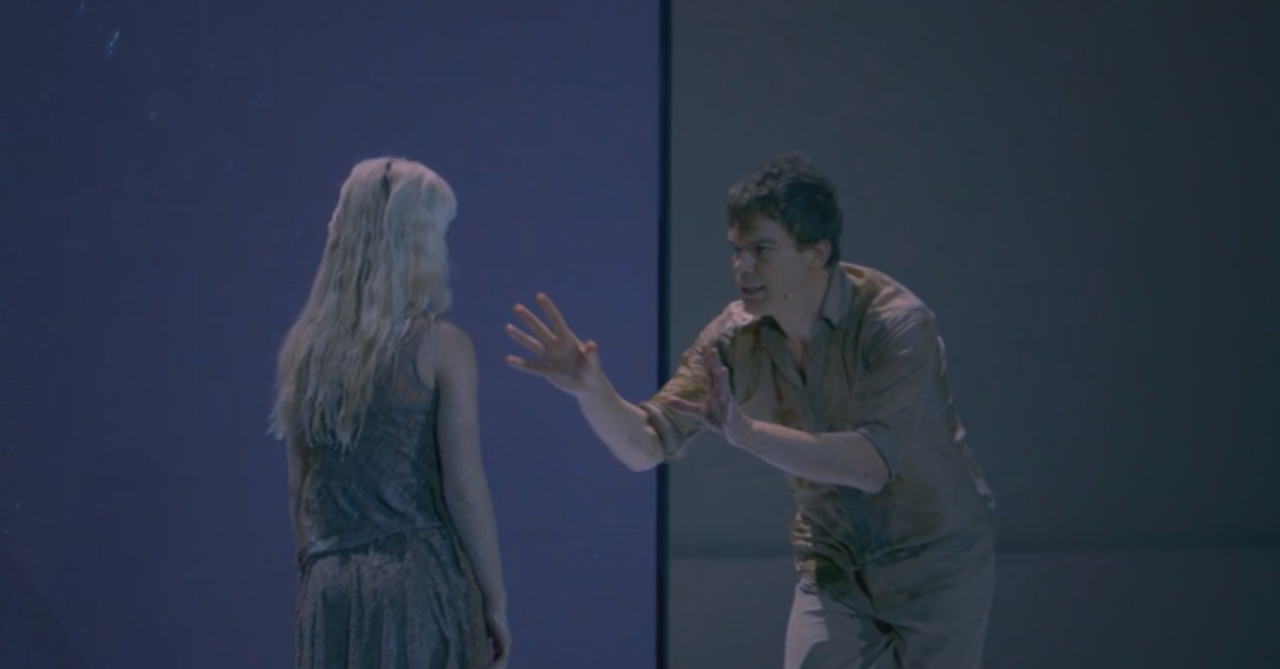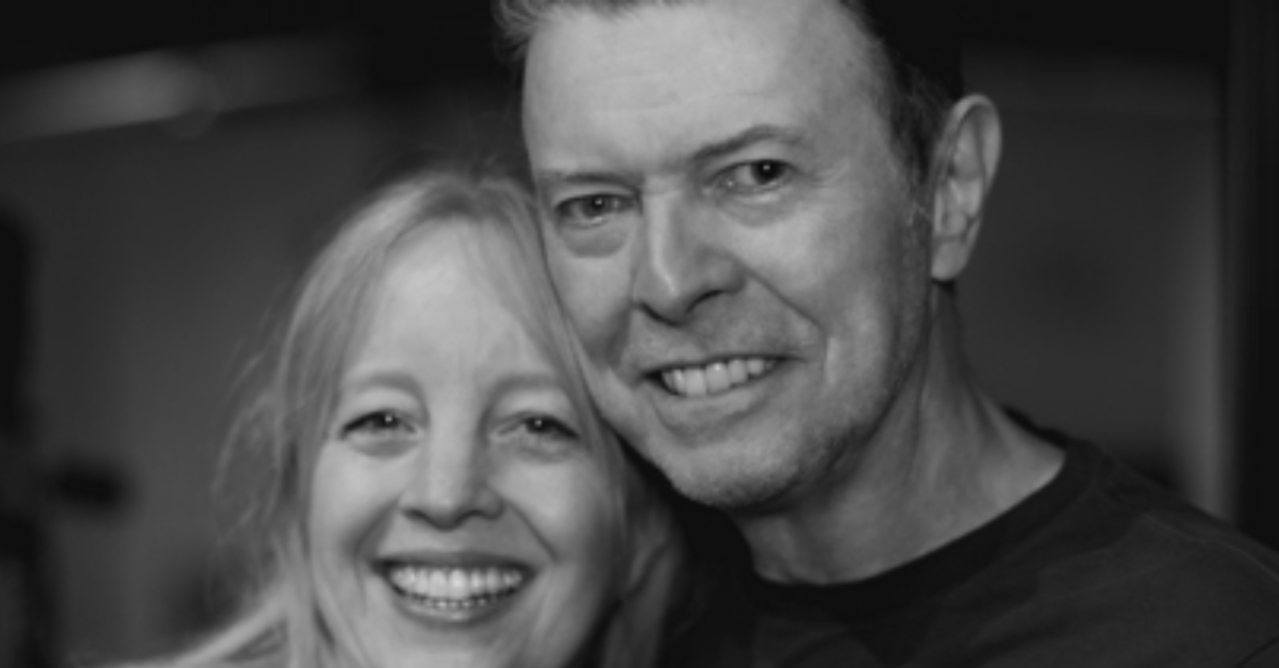It’s been two years since David Bowie left this veil of tears. And in that two years, there’s been a lot of time to reflect on the cultural impact of his music. Whether you like early Bowie, Berlin Bowie, 80s Bowie, 90s Bowie, or albums he recorded in the 2000s until his death, it’s clear that it has been a mixed bag for an artist whose first single (”Liza Jane”) stiffed in 1964 when he fronted the group Davie Jones with The King Bees.
For the new HBO documentary, David Bowie: The Last Five Years the focus is supposed to be the period from 2011-2016, but producer/director Francis Whately didn’t have much footage, interviews, or images for a 95-minute documentary, so he had to stretch. With a film like this, the compelling story is how, after a long absence, Bowie came back to recording music without compromising his artistic vision. Now, if Bowie — like people in many parts of the world — compulsively and obsessively chronicled his life on social media, there would be a plethora of material for the documentary. But, Bowie being Bowie, he went the other way. Opting for obsessive privacy, he kept any details about work on his album ”The Next Day” completely secret. That meant having the musicians who backed him in the studio sign non-disclosures agreements, people who did the artwork to do the same, and even the director of the videos for the record. All of it was hush-hush. The result was — in an age where very little can be kept secret — a surprising return for Bowie. He did absolutely no press for the record, nor did he tour to support the album. His decision to lay low on promotion paid off. The album was number one almost worldwide and certified Gold or Platinum in many countries.
 For Bowie’s on again/off again producer Tony Visconti, he was surprised by the reflective tone of the album’s first single ”Where Are We Now?” Not only does the song reference his long stay in Berlin, Germany, but in the video, Bowie can be seen wearing a t-shirt that says ”m/s Song of Norway.” The reference? Well, it’s about Hermione Farthingale — with whom he had a relationship and collaborated with a group they formed with John Hutchinson in 1968. Yes, she is ”the girl with the mousy hair” in ”Life On Mars?” and the Hermione in ”Letter to Hermione.” Farthingale left Bowie for an actor she met on the set of the film ”Song of Norway” — which she was acting in. As Bowie said in the documentary, ”That really broke me up.” It took him a long time to get over her split with him. Seems unrequited love knows no bounds — and even after being happily married to Imam for decades, it’s clear Bowie still bore the emotional scars of that early relationship.
For Bowie’s on again/off again producer Tony Visconti, he was surprised by the reflective tone of the album’s first single ”Where Are We Now?” Not only does the song reference his long stay in Berlin, Germany, but in the video, Bowie can be seen wearing a t-shirt that says ”m/s Song of Norway.” The reference? Well, it’s about Hermione Farthingale — with whom he had a relationship and collaborated with a group they formed with John Hutchinson in 1968. Yes, she is ”the girl with the mousy hair” in ”Life On Mars?” and the Hermione in ”Letter to Hermione.” Farthingale left Bowie for an actor she met on the set of the film ”Song of Norway” — which she was acting in. As Bowie said in the documentary, ”That really broke me up.” It took him a long time to get over her split with him. Seems unrequited love knows no bounds — and even after being happily married to Imam for decades, it’s clear Bowie still bore the emotional scars of that early relationship.
The interviews with Bowie’s band members who worked on ”The Next Day” and the jazz group led by sax player Donny McCaslin on ”Blackstar” had some nice moments where they broke down a couple of the songs to show what they added to the proverbial mix — and it was quite a lot. Other highlights of ”Blackstar” sessions were when Tony Visconti isolated Bowie’s vocals to show how much he was putting into his vocals on ”Lazarus” (you can hear Bowie breathing hard between verses).
Knowing this was his last album, Bowie ditched any pretense of commercial viability in the songs by exploring a noir jazz vibe with Maria Schneider on the first version of ”Sue (Or in a Season of Crime)” in 2014. That song went through a major musical revision on ”Blackstar” with a kind of manic drum and bass underbelly that changed the tenor of the song. If ”The Next Day” has a ”looking back” quality (as Visconti said at one point in the documentary), ”Blackstar” was both a progressive push to try something new and a bit of a retrospective as well.
 With the musical ”Lazarus” Bowie wrote (mostly because he wanted to write a musical for a long time), it’s interesting to see footage of the actors rehearsing scenes, and how the musical director convinced Bowie to use the song ”Heroes” in the production — even though he was against it until he heard the altered version. Michael C. Hall does give it his all in his portrayal Thomas Newton (The same character in film The Man Who Fell to Earth), but clearly the musical was more of a way for Bowie to explore eras of his life with music from his catalog that, as my Popdose colleague Bob Cashill wrote in his review of the production, ”… is about poses, images, stage pictures—milk and blood are spilled, balloons are kicked around, teenage groupies and Kabuki-masked phantasms loll about.” Perhaps those poses are what Bowie’s career was about: A professional life without a central narrative.
With the musical ”Lazarus” Bowie wrote (mostly because he wanted to write a musical for a long time), it’s interesting to see footage of the actors rehearsing scenes, and how the musical director convinced Bowie to use the song ”Heroes” in the production — even though he was against it until he heard the altered version. Michael C. Hall does give it his all in his portrayal Thomas Newton (The same character in film The Man Who Fell to Earth), but clearly the musical was more of a way for Bowie to explore eras of his life with music from his catalog that, as my Popdose colleague Bob Cashill wrote in his review of the production, ”… is about poses, images, stage pictures—milk and blood are spilled, balloons are kicked around, teenage groupies and Kabuki-masked phantasms loll about.” Perhaps those poses are what Bowie’s career was about: A professional life without a central narrative.
How very postmodern.
While the musical lacked structure, Whately’s documentary is more conventional in its ambitions. Focusing on the musical and last two albums are points where Whately aligns the subject with the title of the film — but alas those moments are doled out sparingly. Instead, the film gets sidetracked with extended sections of Bowie’s career in the 1970s. While much of the footage from that era may not have been exhibited before, it dilutes the main theme of the film: Bowie’s last five years. Now, it’s clear the lack of material meant Whately chose to broaden the scope of the film, but he was not bound by a running time. He could have made a very tight one hour documentary with the footage he had from 2003 to 2016. Instead, Whately traversed some of the same ground he explored in his 2013 film, David Bowie: Five Years. As important it is to highlight Bowie’s cultural impact in the 1970s, it’s a well-trodden path. The overall disappointment of David Bowie: The Last Five Years is that it sheds very little light on Bowie’s late-career projects — or the man himself in the winter of his life.






Comments